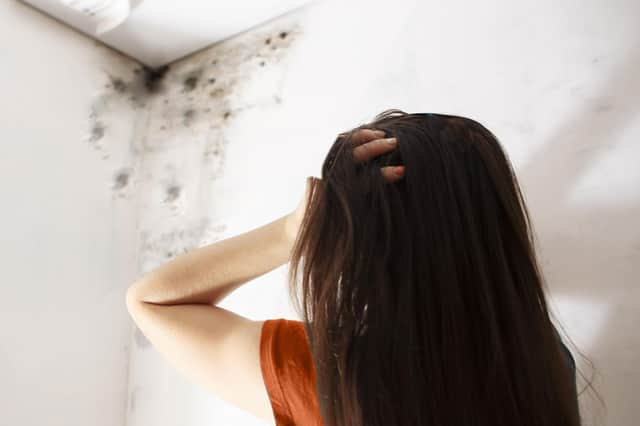Citizens Advice: Damp and mould in rented housing


By Kirklees Citizens Advice & Law Centre chief executive Nick Whittingham
You’ve done the right thing by bringing this to your landlord.
To work out if they are responsible, you’ll need to find the cause of the damp and mould, but this can take time unless there’s a clear cause, like bad insulation or a leaking roof.
Damp is when an area of your property doesn’t dry out, often because it’s cold.
The main types are rising, penetrating, construction, and condensation damp. It can lead to mould, which is a fungus that grows in areas where warm damp air condenses on cold surfaces, like window frames or surfaces on external walls. Information on our website http://www.citizensadvice.org.uk can help you work out what type of damp you have, who is responsible and what you can do.
You should also check your tenancy agreement for mentions of repairs and damp.
Your landlord is responsible for fixing a damp problem if it’s making your home unsafe to live in. For example, this could be if it’s affecting your health or the health of those you live with.
Your landlord will also be responsible if the damp is related to repairs they should have carried out, like if the window frames are rotting. They would have to cover the cost of repairs to any items damaged by the damp, including carpets and furniture.
Condensation is a key cause of damp, as many of us are familiar with. Keeping homes well-heated and well-ventilated is the best way to prevent this, but for many of us, high heating costs and cold weather makes this difficult. If you’re finding it hard to insulate and heat your home, check our website see if you’re eligible for support.
Always avoid doing anything that can make damp worse, as it may affect whether the landlord takes responsibility for repairs. Our website has advice on what to avoid, like drying clothes on heaters, blocking air vents, or using portable gas heaters. You may reach the point where you just want to get out of your tenancy agreement early, but remember this can be very tricky and there might be things you haven’t tried yet.
For example, if your landlord is responsible for the damp in your home but doesn’t do anything, there are steps you can take, like reporting them to the local authority. And as a private renter, if you’ve got evidence from a health professional that damp is making you ill, you may be able to get free legal advice through Legal Aid.
If you would like to speak to Kirklees Citizens Advice and Law Centre, you can call us on 0808 278 7896 (Freephone), or visit our contact centres in Dewsbury or Huddersfield, where we help thousands of people each year. You may be coming to us for the first time, but we can help with issues such as housing, employment, debt, benefits, and more. See our website at http://www.kcalc.org.uk for more information and opening times.